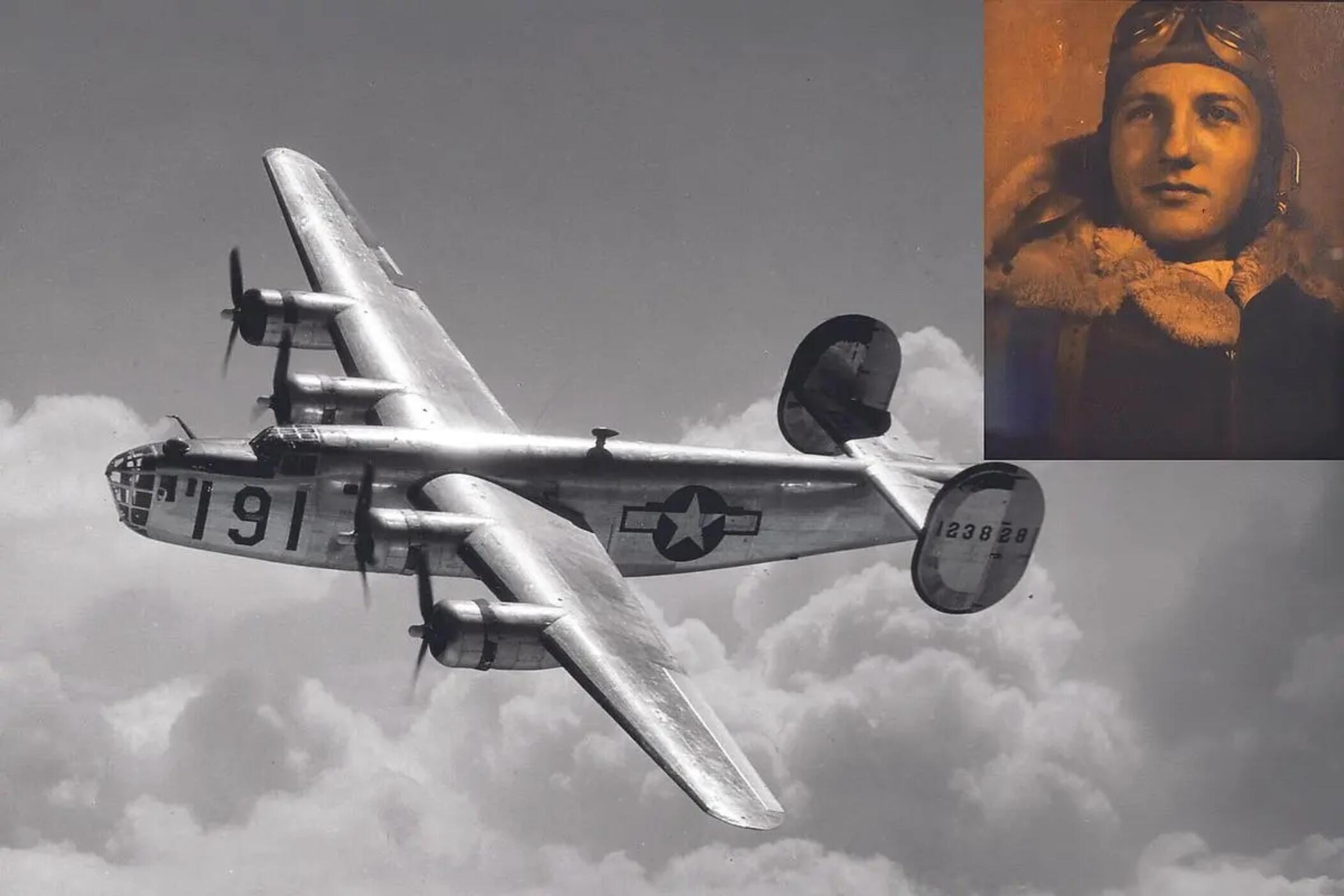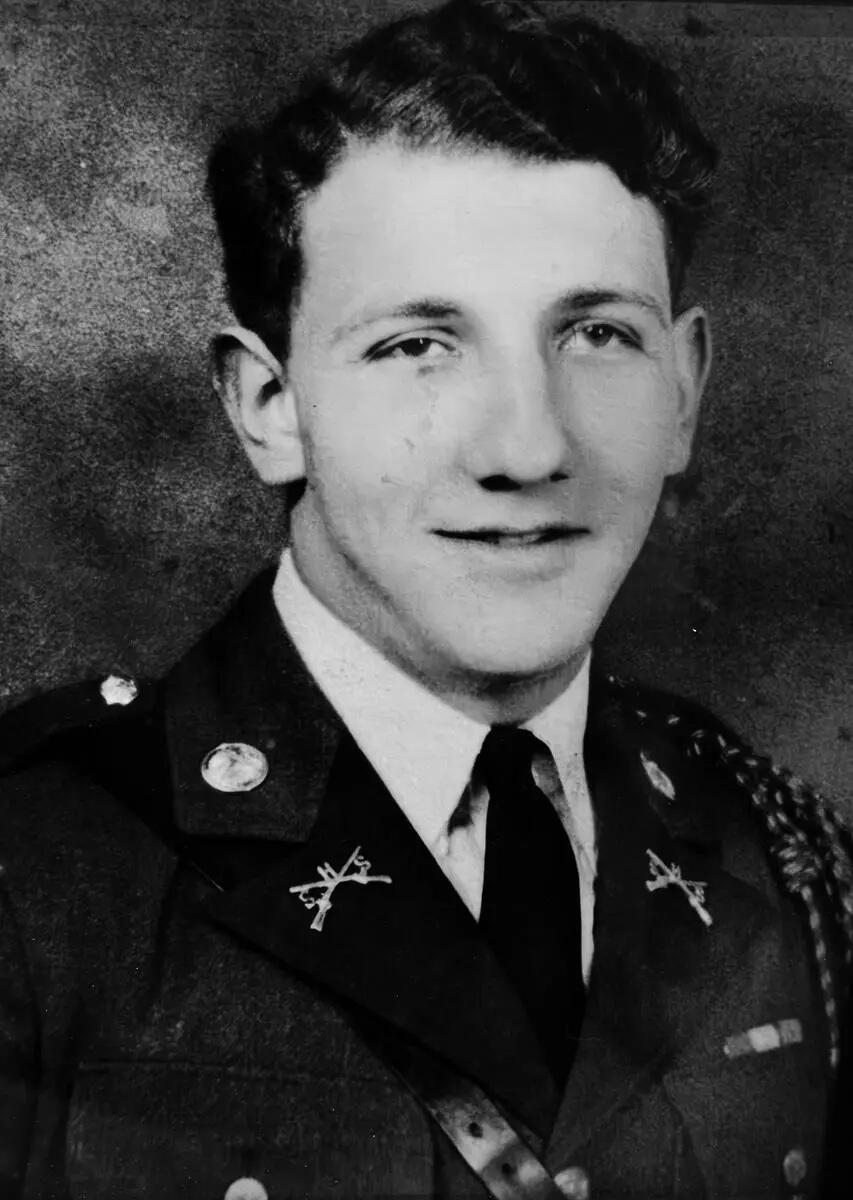
Section Branding
Header Content
The long journey home: 2Lt. Milton Leonard Hymes, Jr.
Primary Content
By Justin Taylor / The Current

At age 22, 2Lt. Milton Leonard Hymes, Jr., the navigator aboard a B-24J Liberator heavy bomber, took off from an airbase in Norfolk, England, on an ill-fated mission deep into Nazi occupied Poland. Eight decades later, he’s returned home.
Milton Hymes, Jr., was born in Savannah, on April 21, 1922, to Milton and Georgia Hymes. He grew up on East 39th Street and attended Savannah High, where he played football, was in the Glee Club, ROTC, and aspired to be a country doctor. He and his family were members of Congregation Mickve Israel and he was engaged to be married upon his return home.
In April 1942, Hymes enlisted in the U.S. Army Air Corps to serve his country in World War II, as a navigator on a 10-man crew B-24J Liberator with the 565th Bombardment Squadron, 389th Bombardment Group, 2nd Combat Bomb Wing, 2nd Air Division of the Mighty Eighth Air Force.
On June 20, 1944, two weeks after participating in the D-Day invasion, the 565th Bomber Squadron took off from the Station 114 airfield in Hethel, England, and joined a formation of over 300 bombers on a mission to destroy the synthetic oil factory in Politz, Germany.
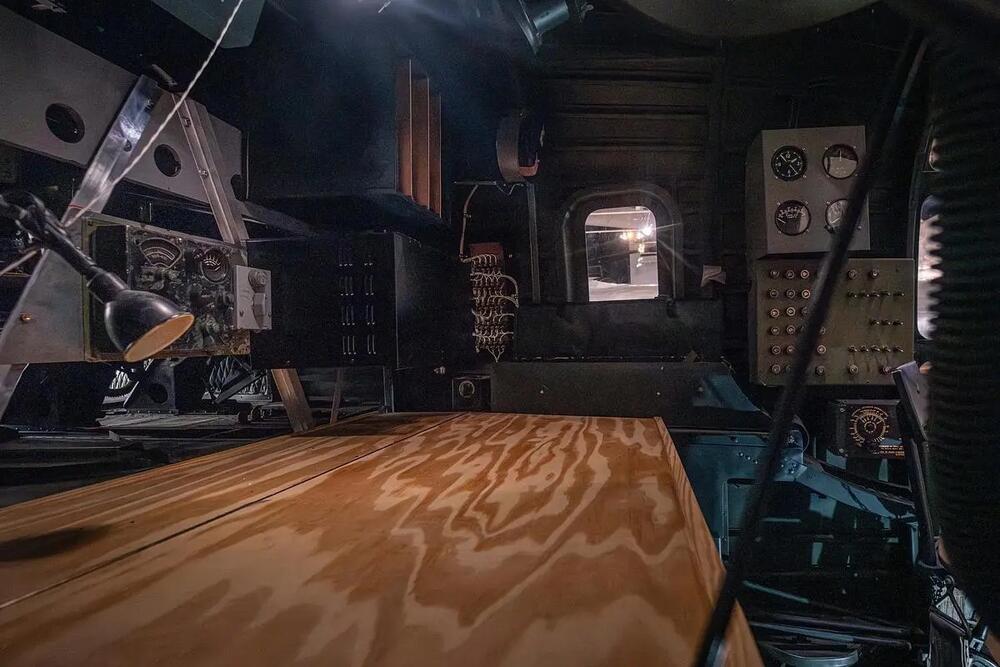
Several hours into the flight, over the Baltic Sea at an altitude of 20,000 feet, the formation neared Langeland Island, Denmark, and prepared to make its approach to the target. Suddenly, Hymes’ plane, flown by 1st. Lt. William Powers (pilot) and 2nd Lt. Oscar J. Boudreaux (co-pilot) collided with the bomber in formation below it.
One of the propellers sliced through the fuselage of the plane below, cutting off the tail section and sending the plane tumbling out of the sky.
Immediately after the collision, seeing one engine missing a propeller and leaking fuel, Powers ordered the crew to abandon the plane.
Bourdreaux reported in an interview after the war that he “was thrown into a left-hand spin. Upon colliding, pilot said to clear out. Stayed in seat trying to right the ship, but was unsuccessful. As I prepared to leave I saw two men in the nose of the ship. Think they were the nose gunner and the navigator.”
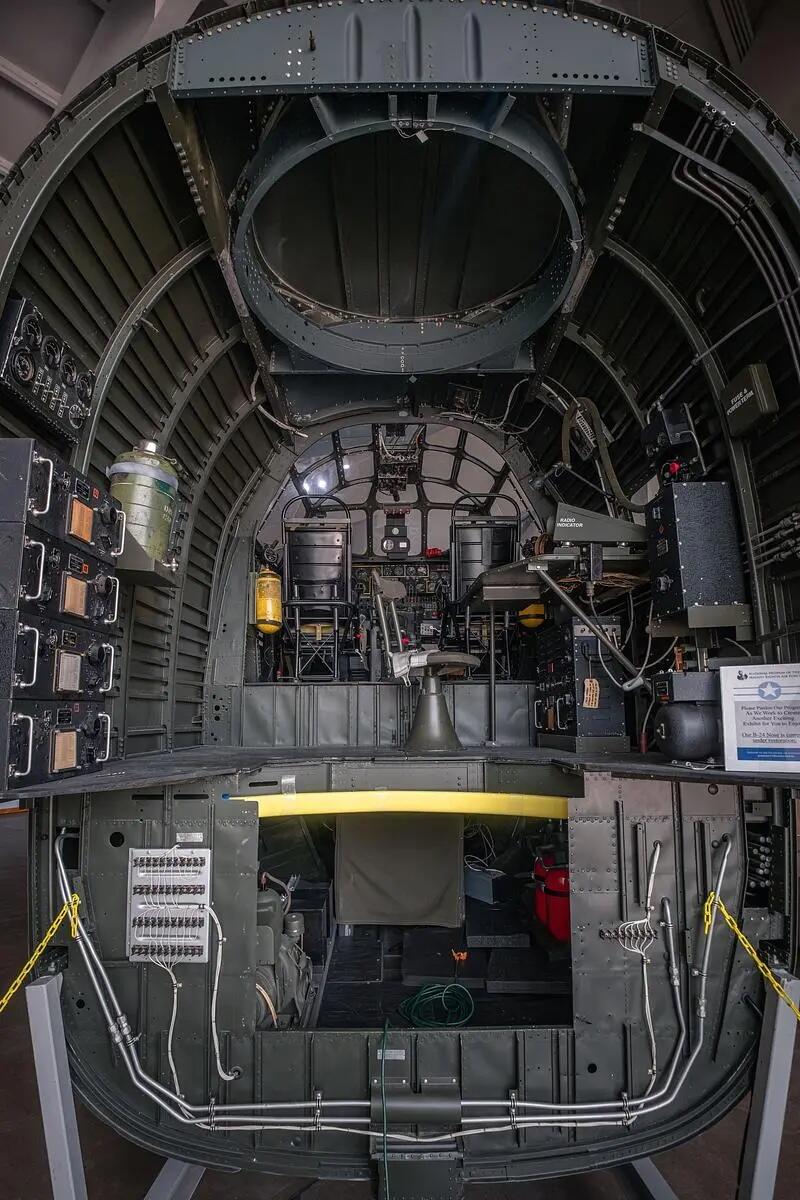
As the pilot and co-pilot bailed out, the aircraft spun violently, with Hymes and 2nd Lt. Robert T. McCollum trapped in the nose, unable to escape. The plane exploded upon hitting the water.
Powers, Boudreaux, and turret gunner S/Sgt. Jacob G. Heilich from the second plane survived the incident and were picked up by a Danish fishing vessel, handed over to the Germans, and spent the rest of the war as POWs.
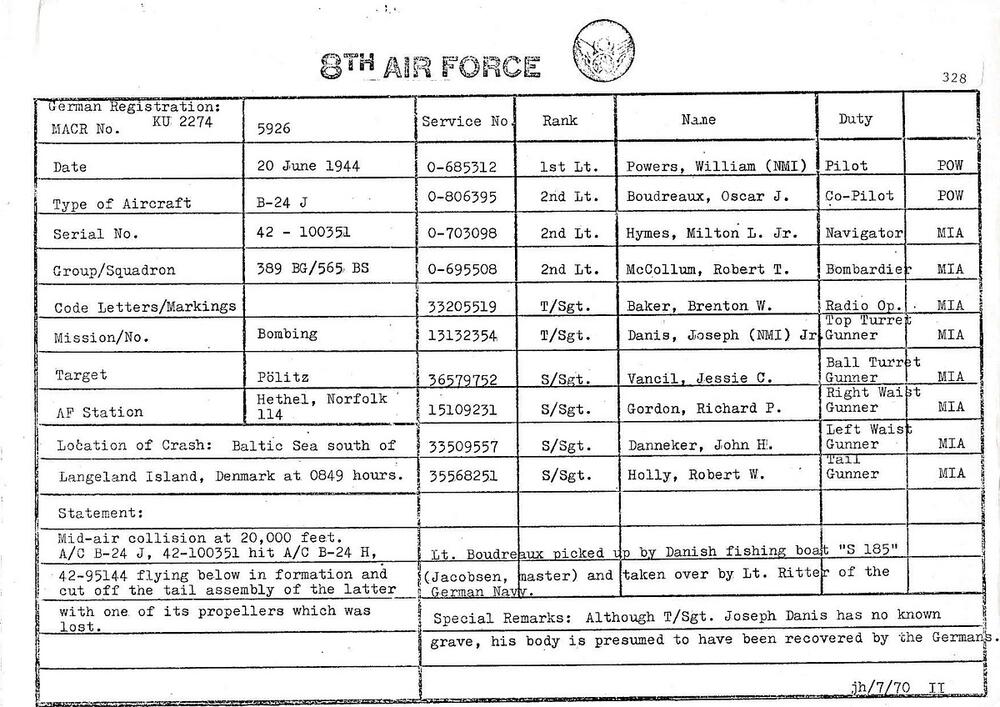
Hymes, however, would lie at the bottom of the sea, entombed in the wreckage of his Liberator, for 81 years. In total, 17 lives were lost in the accident.
Hymes and the other aviators involved in the incident were among the 78,750 American service members listed as Missing In Action during WWII.
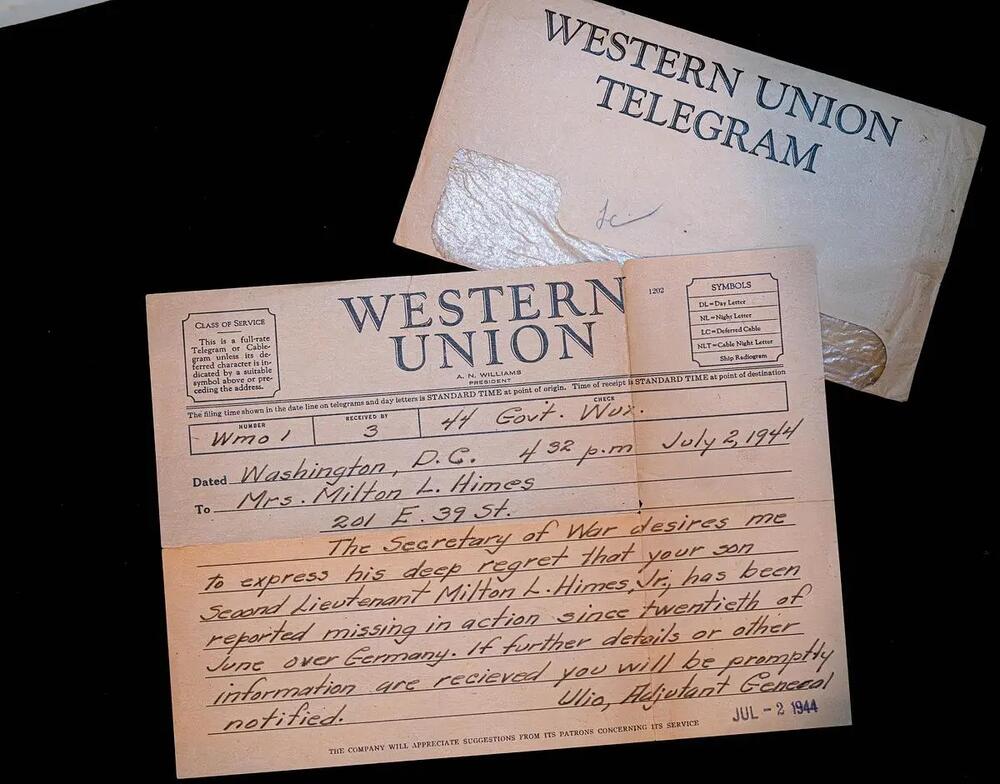
Historians have speculated that the bomber formation was receiving heavy and accurate German anti-aircraft fire, which may have contributed to the collision between the two planes. However, no records have been found to confirm the theory.
After being rescued from a POW camp in May of 1945, the sole survivor of the second plane ran into Powers and Boudreaux on his way back to the U.S. “I asked them what was the trouble and why they were flying so close,” said Heilich during his debrief, “They said they saw us too late to avoid hitting us. The pilot didn’t talk very much. I could see it bothered him to talk about it, you know how he must feel.”
In 2019, the Danish Royal Navy was notified that a group of recreational divers had found the wreckage of a WWII-era aircraft, 60 feet below the surface.
Upon confirmation that it was a U.S. military aircraft, the wreck was deemed off-limits, and the Defense POW/MIA Accounting Agency (DPAA), under the U.S. Department of Defense (DoD), was tasked with identifying and repatriating remains of the U.S. servicemembers.
Nine of the 10 500-pound bombs aboard the aircraft were found intact, removed and detonated by the Danish Royal Navy so that the wreck could be examined safely.
Project Recovery, a nonprofit group of marine scientists, archeologists, and volunteers that travels the world in search of missing aircraft, was contracted by the DoD to examine the wreckage.
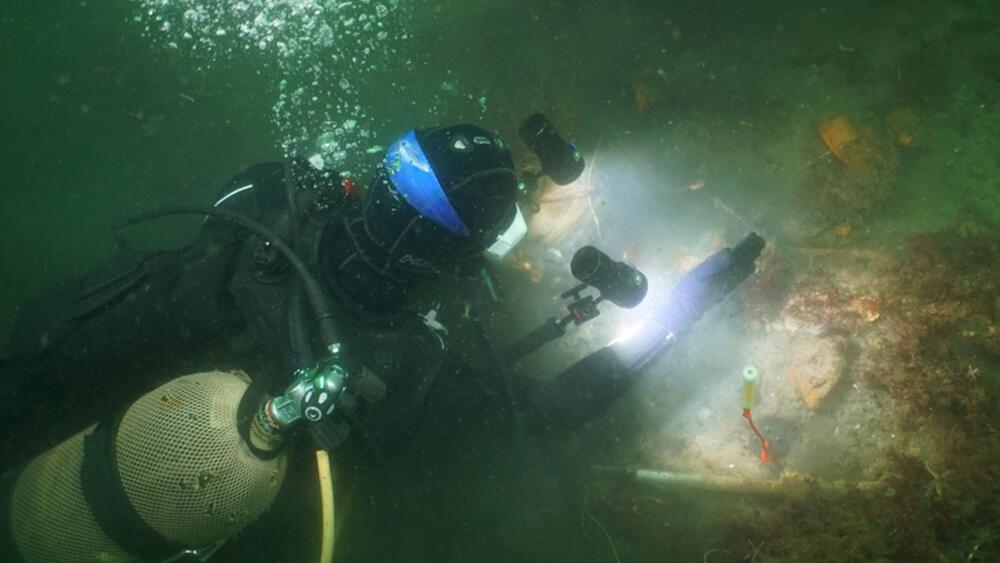
In the fall of 2022, archeologists were able to identify a carburetor from one of the aircraft’s four engines that was unique to a B-24 model J, only one of which was listed as missing from the war.
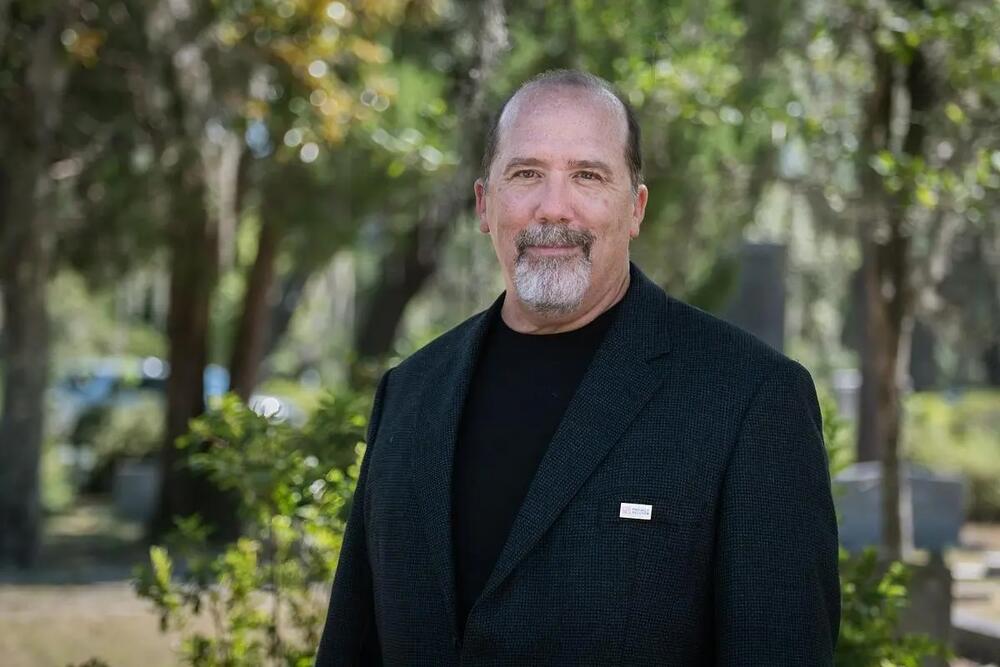
Diver and marine archaeologist Dan Davis, with Project Recovery, spent two weeks with the team meticulously examining the wreckage. “The entire fuselage was just tin-canned right into one spot about the size of a pitcher’s mound,” Davis said, “so all that stuff was just sort of in a big pile, and it was in that pile that we started finding human remains on the last day.”
Using dental and anthropological analysis, as well as material evidence, scientists with the DPAA were able to match records to the remains found at the crash site. DNA testing by the Armed Forces Anthropological Examiner System later confirmed the findings.
In total, the remains of three crew members were identified in the wreckage. Lt. Hymes, Lt. McCollum, and Staff Sgt. John Danneker. “When Milton Hymes was identified, I was absolutely thrilled,” Davis said. “It’s the first set of remains that I worked on that have gone all the way through the process, through ID and then repatriation. So this is very special for me.”
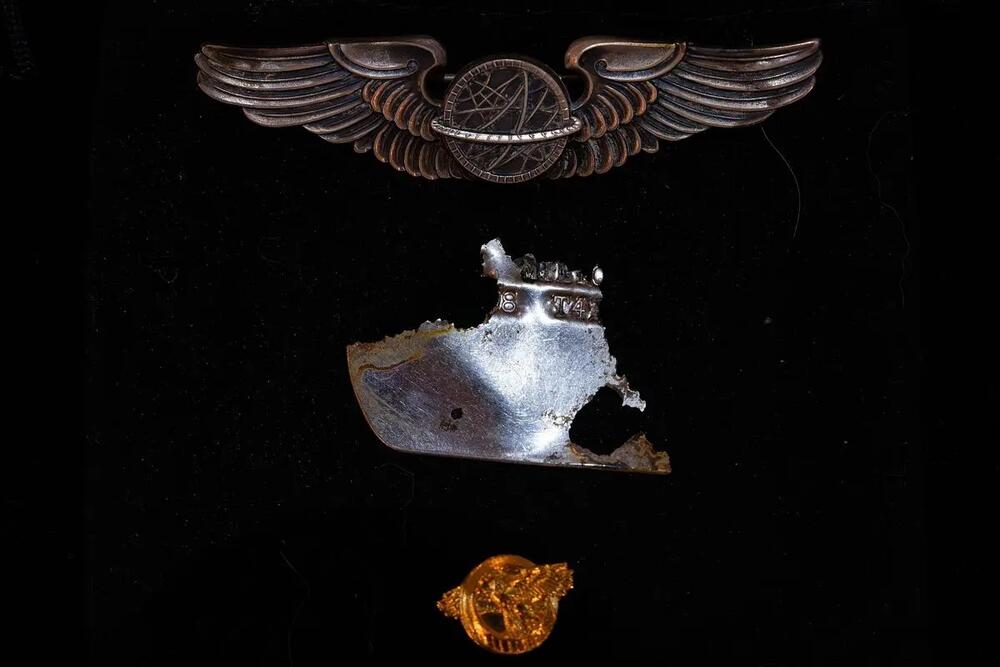
When the DPAA reached out to the family to share the news and help confirm the identity of the remains, the family was in disbelief. “I thought it was a hoax. I thought it was a scam,” said Milton Gay, Lt. Hymes’ nephew. “Someone calls and says, we need you to send some information so we can get some DNA from you and find out if this is real.”
As the news started to sink in, the family began the process of healing a wound that spanned generations. “It’s about our grandmother and our mothers and the fact that they hurt so long; it’s very emotional,” said Donald Pittman, another nephew. “They told us each it left a hole in their hearts.”
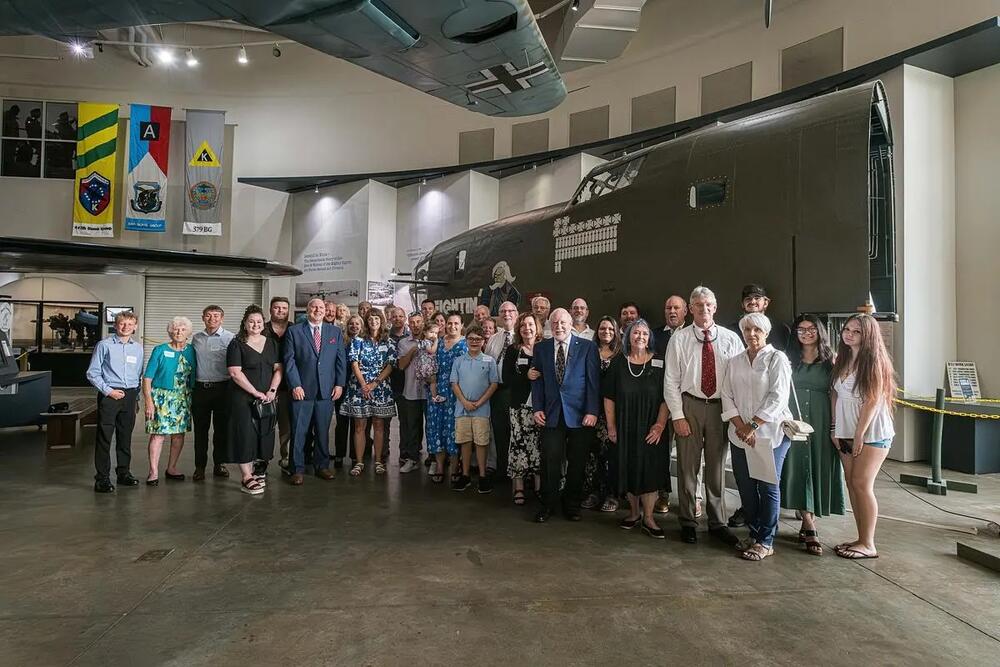
On Friday, July 18th, 2025, Hymes arrived at his final resting place beside his parents in Bonaventure Cemetery. The Patriot Guard Riders, a motorcycle club of veterans and first responders, escorted the casket containing his remains.

A crowd of approximately 200 people attended the service. In attendance were family members, veterans, representatives of the Mighty Eighth Air Force Museum, and members of Project Recovery, including Dan Davis.

Hymes received full military honors, provided by an honor guard from the 315th Infantry, 2nd Brigade, of the 3rd Infantry Division from Fort Stewart.
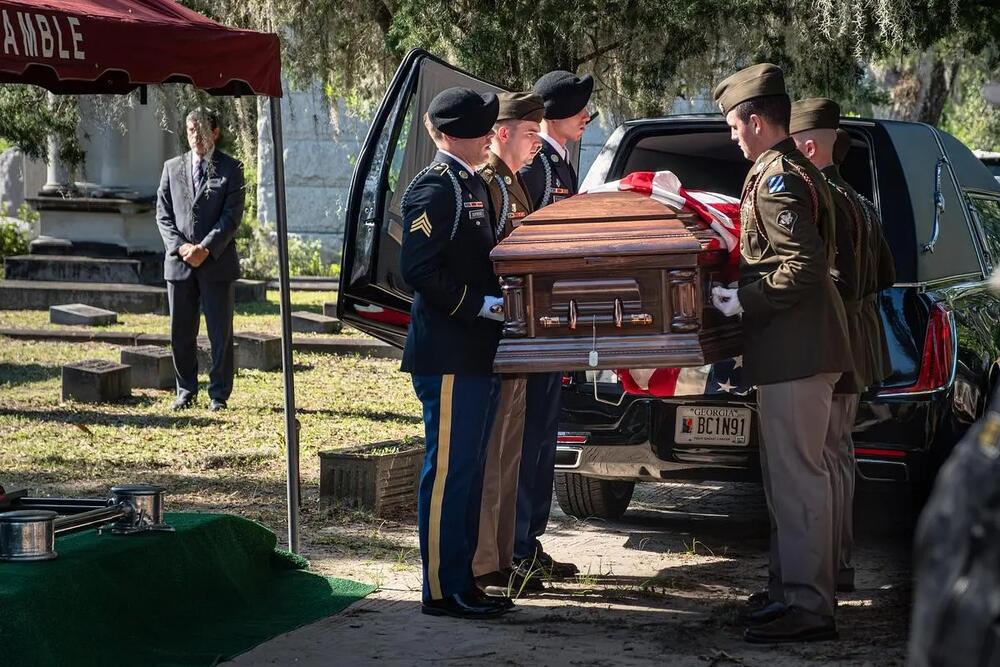
Rabbi Robert Haas of Congregation Mickve Israel officiated the ceremony.
This story comes to GPB through a reporting partnership with The Current.
